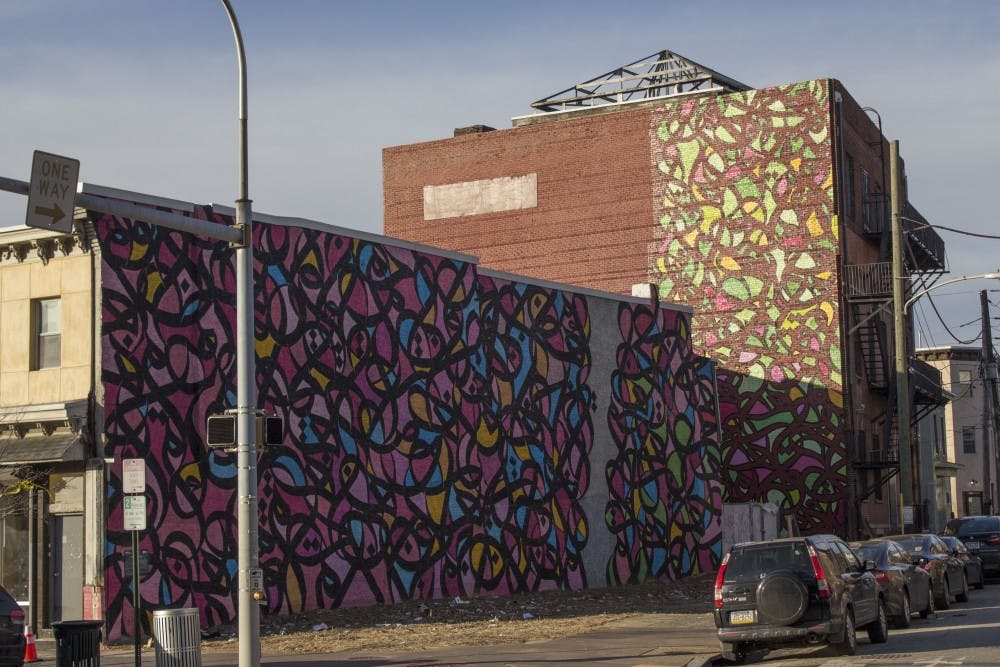At the corner of North Preston and Market Street by 40th Street Station, the creams, rustic reds, and light blues that define West Philadelphia are interrupted by a wall bursting with colors of green, blue, red, pink, and orange. Snaking between these hues are contours of black lines. But they aren't lines. They are words.
The wall is actually a mural titled Soul of the Black Bottom by Tunisian–French street artist eL Seed and the black lines are Arabic calligraphy. It’s what eL Seed calls “calligraffiti,” a play on the words calligraphy and graffiti. The words spell out a quote from W.E.B. Du Bois’ book Darkwater: Voices from the Veil that reads “I believe that all men, black and brown, and white, are brothers, varying through time and opportunity, in form and gift and feature, but differing in no essential particular, and alike in soul and the possibility of infinite development.” A timeless reminder, especially on the eve of the anniversary of Trump’s inauguration.
Soul of the Black Bottom is part of a larger project initiated by Al–Bustan Seeds of Culture and Mural Arts Philadelphia called (DIS)PLACED. Having started in the summer of 2017, it takes the narrative of twelve immigrants to Philadelphia to tell their stories and express them through artistic means. Apart from eL Seed, other artists involved include Buthayna Ali, a Syrian visual artist, Nazem El Sayed, a Lebanese poet, and Kinan Abou–afach, a Syrian composer and musician. With the ongoing global refugee crisis and futile political discussions on the merits of immigration, the theme is especially relevant today.
The work specifically, however, is a reflection both of eL Seed’s personal identity and of the ever–changing social fabric today. Use of “calligraffiti” serves to showcase the dichotomy of eL Seed’s identities both as a Tunisian and a Parisian. The Arabic calligraphy, which is typically very structured and methodical, represents his roots, but it is stylized as more free flowing and pays homage to his time in Paris and how he’s changed because of it.
As to the piece’s relation to the grander scheme of society, it is an effort to incorporate and engage with the West Philadelphia community. The choice of Du Bois is by no means unintentional either; as a tribute to black history, the quotation speaks to the similarities between us, regardless of race or ethnicity, that should bestow us the same opportunities. Of course, it is not coincidental as well that Du Bois was especially important in Philadelphia, where he spent a year as an assistant professor of sociology at Penn and published his monumental work The Philadelphia Negro.
This is probably why this piece is a personal touch to Penn. Through the involvement of Professor Huda Fakhreddine, assistant professor of Arabic literature in the School of Arts and Sciences, the project received support from Penn’s Global Engagement Fund. As Anisa Hasan–Granier (C ’20), who worked on the project and actually assisted in painting the wall, relates, the piece is the perfect embodiment of how “art can create change and social resistance.”







